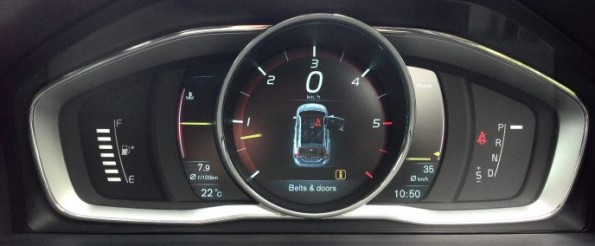The newer and more complex your car, the more warning lights there will be on the dashboard. They are there to give you vital information about how your car is functioning and ignoring them could mean you are doing damage to your vehicle. The red lights are the ones you need to pay attention to immediately as continuing to drive is likely to either damage your vehicle or cause an additional risk if there’s an accident.
Oil pressure
 The oil warning light is one of the most critical warning lights. If this light comes on, the engine isn’t getting enough oil. This could cause it to overheat and seize, and that will mean an expensive repair bill. Pull over as soon as you can and check the oil. If there’s no oil then you have a leak or your car is burning oil, and you could simply top it up and see if the oil light goes off, then drive to get it fixed; if there is oil then there is either a fault in the sensor or some other problem. You will have to get a mobile mechanic to come and fix it, or have it towed somewhere.
The oil warning light is one of the most critical warning lights. If this light comes on, the engine isn’t getting enough oil. This could cause it to overheat and seize, and that will mean an expensive repair bill. Pull over as soon as you can and check the oil. If there’s no oil then you have a leak or your car is burning oil, and you could simply top it up and see if the oil light goes off, then drive to get it fixed; if there is oil then there is either a fault in the sensor or some other problem. You will have to get a mobile mechanic to come and fix it, or have it towed somewhere.
Engine coolant temperature
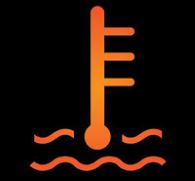 As soon as you see this light turn on your car’s heater on full heat, full fan to dissipate some of the heat, stop as soon as you can and switch off the engine. You can keep the ignition on (but not the engine running) to run the fan to pull air through the cooling vents and help cool it down. Open the bonnet to let the engine cool. Once the engine is cool, check the coolant level. If it’s low you’ve almost certainly got a leak.
As soon as you see this light turn on your car’s heater on full heat, full fan to dissipate some of the heat, stop as soon as you can and switch off the engine. You can keep the ignition on (but not the engine running) to run the fan to pull air through the cooling vents and help cool it down. Open the bonnet to let the engine cool. Once the engine is cool, check the coolant level. If it’s low you’ve almost certainly got a leak.
If you are in the middle of nowhere, topping it up with water will get you a few more kilometres, but this really is an emergency solution only. Adding cold water to a hot engine is not a good idea as it can cause cracks and warping as the metal is forced to cool rapidly.
If your car has a temperature gauge and it’s risen much above mid-way, then you may have a cooling problem.
Battery warning light
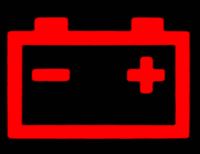 This light shows that the battery is not being charged. It could be that the alternator drive belt has failed, and this can cause other problems, too, especially if that belt drives the water pump for the cooling system. If you don’t notice any other warning lights you will be OK to drive for a few kilometres to get to a petrol station or a mechanic, but your battery will go flat eventually and you won’t be able to restart the car.
This light shows that the battery is not being charged. It could be that the alternator drive belt has failed, and this can cause other problems, too, especially if that belt drives the water pump for the cooling system. If you don’t notice any other warning lights you will be OK to drive for a few kilometres to get to a petrol station or a mechanic, but your battery will go flat eventually and you won’t be able to restart the car.
Seatbelt warning light
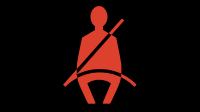 If the seatbelt warning light is on then you haven’t fastened your seatbelt properly and this puts you at greater risk of injury or death in an accident. Check the seatbelt is clicked in all the way. If you are carrying something heavy on one of the seats, this light might come on. If your load causes an audible warning from the car, move it to the boot if possible (it’s best not to have unrestrained heavy loads in the passenger compartment; if that’s not possible, fasten the seatbelt behind it.
If the seatbelt warning light is on then you haven’t fastened your seatbelt properly and this puts you at greater risk of injury or death in an accident. Check the seatbelt is clicked in all the way. If you are carrying something heavy on one of the seats, this light might come on. If your load causes an audible warning from the car, move it to the boot if possible (it’s best not to have unrestrained heavy loads in the passenger compartment; if that’s not possible, fasten the seatbelt behind it.
Park brake/handbrake warning light
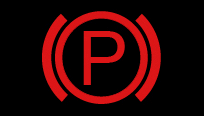 If this light is on, you have left your handbrake on. This means that the brake shoes will be dragging on the rear wheels and will eventually overheat and possibly catch fire. Check the handbrake is fully disengaged. If it is, but the light is on, it’s possible the shoes are sticky and are not releasing the wheel fully.
If this light is on, you have left your handbrake on. This means that the brake shoes will be dragging on the rear wheels and will eventually overheat and possibly catch fire. Check the handbrake is fully disengaged. If it is, but the light is on, it’s possible the shoes are sticky and are not releasing the wheel fully.
Airbag warning light
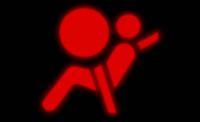
If the airbag warning light comes on then it means there’s something wrong with the sensors that control when the airbag deploys. This means that the airbag could deploy during normal driving or not deploy in an accident. It’s unlikely you’ll be able to fix this yourself and you will need to have a mechanic check it.
Door open warning light
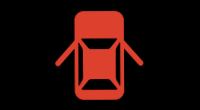 If one or more of the doors isn’t closed properly there is more risk in an accident. The door could fly open, allowing something to enter the cabin, e.g. bits of another vehicle you’re in the accident with. Also, doors provide structural rigidity to the car if it’s in a crash; if the door is open, the car will crumple more easily.
If one or more of the doors isn’t closed properly there is more risk in an accident. The door could fly open, allowing something to enter the cabin, e.g. bits of another vehicle you’re in the accident with. Also, doors provide structural rigidity to the car if it’s in a crash; if the door is open, the car will crumple more easily.
Brake warning light
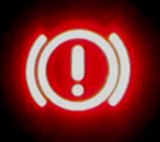 If the brake warning light comes on then you might be low on brake fluid, or the pads are dangerously low. Pull over immediately. If your brakes don’t work then you will need to use the emergency brake/handbrake, and change down through the gearbox to bring the car to a stop. Avoid using the handbrake at high speed, or pulling it on too hard as it can cause the rear wheels to lock.
If the brake warning light comes on then you might be low on brake fluid, or the pads are dangerously low. Pull over immediately. If your brakes don’t work then you will need to use the emergency brake/handbrake, and change down through the gearbox to bring the car to a stop. Avoid using the handbrake at high speed, or pulling it on too hard as it can cause the rear wheels to lock.
You might have ABS in the icon for your car, rather than the exclamation mark (i.e. ABS in a circle). This could indicate the above faults, or that the ABS sensors aren’t working on the wheels.
In some vehicles this is used for the handbrake.
Engine warning light
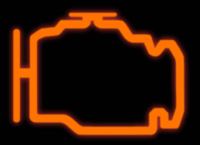 If this light comes on yellow it’s usually advisory that the engine needs to be checked; if it comes on in red, you must stop immediately.
If this light comes on yellow it’s usually advisory that the engine needs to be checked; if it comes on in red, you must stop immediately.
The future of warning lights
With more and more cars using screens in their dashboard instrument cluster (that’s what the collective group of gauges, dials and warning lights is called), there are more and more representations of how these warnings are given.
Here are a number of car dashboards showing the different styles. You’ll see some of the warning lights active if we managed to take the photo before they went out.
Ford Kuga Titanium
Central screen gives some vehicle information, like if doors are open, but there are still traditional lights – you can see the handbrake light is on.
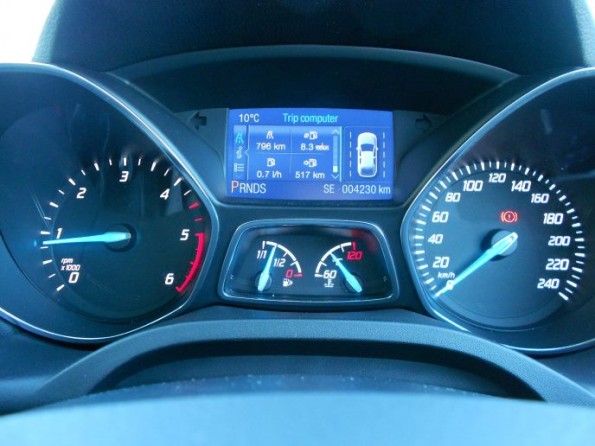
Honda Civic
The split dashboard of the Honda Civic shows warning lights on the lower section.
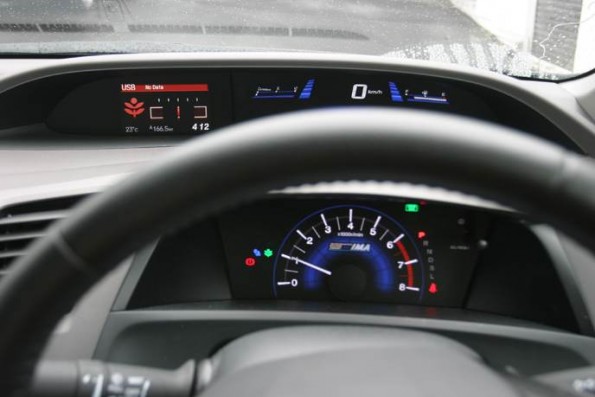
Ford Mondeo XR5
The screen takes up more room in the instrument cluster.
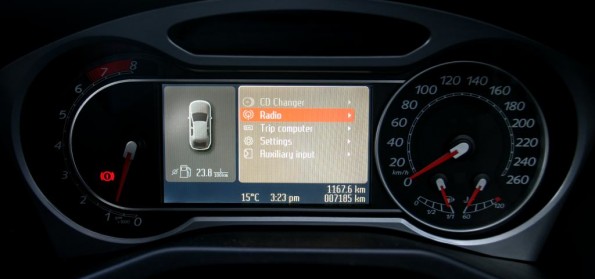
Volvo V60 D4 Luxury
The graphical representation of the open door shows exactly which door needs to be closed.
